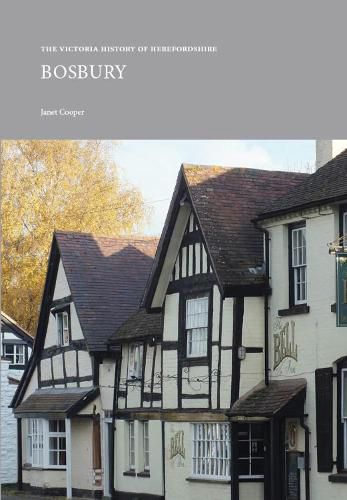Readings Newsletter
Become a Readings Member to make your shopping experience even easier.
Sign in or sign up for free!
You’re not far away from qualifying for FREE standard shipping within Australia
You’ve qualified for FREE standard shipping within Australia
The cart is loading…






Bosbury is the second parish history to be produced by the Trust for the Victoria County History of Herefordshire, following the history of Eastnor published in 2013.
Like Eastnor, Bosbury is an agricultural parish, near the market town of Ledbury. It covers a relatively large area below the western slopes of the Malvern Hills. In the Middle Ages Bosbury was the site of one of the favourite residences of the bishops of Hereford; in the western part of the parish, called Upleadon, was an estate belonging first to the Knights Templar and then to the Hospitallers. From the 16th century onwards both estates passed into the hands of tenants, leaving the parish without a major resident landowner until John Stedman and Edward Higgins successively developed the Bosbury House estate in the late 18th and the 19th century. Much of that estate was given after the First World War to create the Bosbury Farm Settlement for former soldiers. The economy of the parish has always been agricultural, mixed farming being practised. Orchards have been important, particularly on the higher ground in the northern part of the parish, and hops have been grown since the 17th century. By the late 19th century the lack of industry, and indeed of any major roads, made the parish appear an oasis of rural peace. The many timber-framed buildings, particularly those along the village street, and the parish church with its detached bell tower, attracted visitors and some new residents, but the parish avoided any large-scale 20th-century development.
$9.00 standard shipping within Australia
FREE standard shipping within Australia for orders over $100.00
Express & International shipping calculated at checkout
Bosbury is the second parish history to be produced by the Trust for the Victoria County History of Herefordshire, following the history of Eastnor published in 2013.
Like Eastnor, Bosbury is an agricultural parish, near the market town of Ledbury. It covers a relatively large area below the western slopes of the Malvern Hills. In the Middle Ages Bosbury was the site of one of the favourite residences of the bishops of Hereford; in the western part of the parish, called Upleadon, was an estate belonging first to the Knights Templar and then to the Hospitallers. From the 16th century onwards both estates passed into the hands of tenants, leaving the parish without a major resident landowner until John Stedman and Edward Higgins successively developed the Bosbury House estate in the late 18th and the 19th century. Much of that estate was given after the First World War to create the Bosbury Farm Settlement for former soldiers. The economy of the parish has always been agricultural, mixed farming being practised. Orchards have been important, particularly on the higher ground in the northern part of the parish, and hops have been grown since the 17th century. By the late 19th century the lack of industry, and indeed of any major roads, made the parish appear an oasis of rural peace. The many timber-framed buildings, particularly those along the village street, and the parish church with its detached bell tower, attracted visitors and some new residents, but the parish avoided any large-scale 20th-century development.